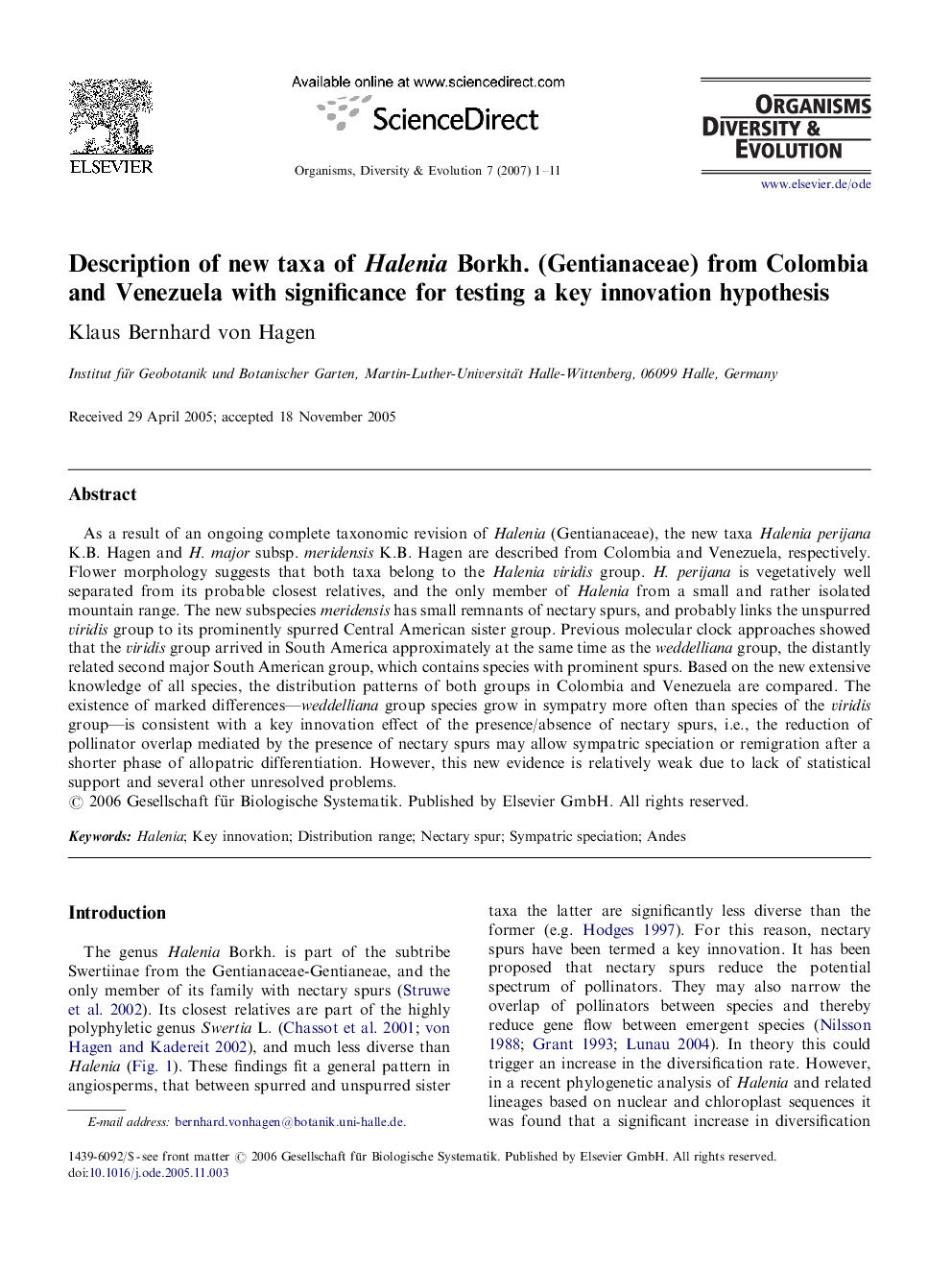| Article ID | Journal | Published Year | Pages | File Type |
|---|---|---|---|---|
| 4458734 | Organisms Diversity & Evolution | 2007 | 11 Pages |
As a result of an ongoing complete taxonomic revision of Halenia (Gentianaceae), the new taxa Halenia perijana K.B. Hagen and H. major subsp. meridensis K.B. Hagen are described from Colombia and Venezuela, respectively. Flower morphology suggests that both taxa belong to the Halenia viridis group. H. perijana is vegetatively well separated from its probable closest relatives, and the only member of Halenia from a small and rather isolated mountain range. The new subspecies meridensis has small remnants of nectary spurs, and probably links the unspurred viridis group to its prominently spurred Central American sister group. Previous molecular clock approaches showed that the viridis group arrived in South America approximately at the same time as the weddelliana group, the distantly related second major South American group, which contains species with prominent spurs. Based on the new extensive knowledge of all species, the distribution patterns of both groups in Colombia and Venezuela are compared. The existence of marked differences—weddelliana group species grow in sympatry more often than species of the viridis group—is consistent with a key innovation effect of the presence/absence of nectary spurs, i.e., the reduction of pollinator overlap mediated by the presence of nectary spurs may allow sympatric speciation or remigration after a shorter phase of allopatric differentiation. However, this new evidence is relatively weak due to lack of statistical support and several other unresolved problems.
